The Heartbreaking Symbolism of The Clone Helmet In Star Wars: The Clone Wars’s Final Episodes
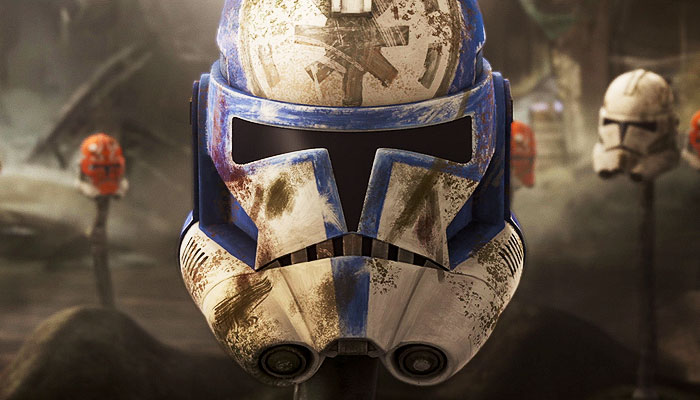
Since its inception, Star Wars has been a universe steeped in symbolism and allegory. Much like the mythology and science fiction that inspired George Lucas, objects and symbols take on immense significance within the Star Wars universe. The colors of lightsabers are key example of the importance that writers and designers of the Star Wars place on symbolism; the foreboding crimson sabers represent the Sith while blue and green usually represent the more noble Jedi. The Clone Wars animated series (2005-2014, 2020), the last aspect of Star Wars that George Lucas helped shaped (Lucasfilm was sold to Disney in 2012), follows the examples of its predecessors by placing symbolic emphasis on key objects and ideas throughout the series.
One key symbol that has become important to the larger Star Wars universe is the helmet of the clone trooper. The clones were the in-universe predecessors of the storm troopers from the original Star Wars trilogy, though the clones were genetically identical unlike the Empire’s storm troopers. Since the helmet and armor of the clones debuted in Attack of The Clones in 2002, the design has been tweaked and altered several times, but the overall design of the clones’ armor and helmets have become synonymous with the prequel era (Episodes I, II, and III).
The helmet and armor of the clones become even more important when the second The Clones Wars animated series (2005-2014, 2020) used its seven seasons to develop and illustrate the individual personality and brotherhood of the clones. While bound by key characteristics, training, and genetic programming, the well-regarded show demonstrated that clone soldiers had distinct identities and character traits that helped them become more fully realized characters. Many of the key clone characters within the series, including characters like Captain Rex, Fives, and Echo have become fan favorite characters for a new generation of Star Wars fans. In an interview with writer and producer, Dave Filoni, The Clones Wars‘s supervising director asserted that the audience of The Clone Wars built “real relationship with those characters [clones] as their friends and heroes” (Ratcliffe). In short, The Clone Wars made many of the individual clones as significant and beloved as many of their Jedi counterparts.
In 2020, when The Clone Wars returned for a final twelve episode season (after its disappointing 2014 cancellation by Disney), the show set out to finally conclude the war, thus bringing a satisfying end to the series that helped define a new generation of Star Wars fans. The team working on the final season (the events of which crossover with the heartbreaking events of Order 66), faced the difficult task of portraying the clones as both heroic and vulnerable brothers-in-arms, as well as individuals stripped of their free will. During Order 66, the genocide of the entire Jedi Order, the clones’ inhibitor chips and conditioning forced them to engage in the violence against the Jedi, making the clones responsible for the murder of the individuals they once fought and died alongside.
In the final arc of the series, The Clone Wars team used the helmet of the clone troopers as an important symbol. While the helmet often served as a symbol of brotherhood among the clone troopers, the final four episodes gained new meaning as clones and Jedi complete their collision course. The removal helmet was often used to illustrate the humanity of the clones and it served as a reminder of their personal identities. In contrast, during and after Order 66, the helmet was used as a symbol of how the clones were often treated as disposable soldiers, with the galaxy at large generally disregarding their personal identities and emotions. In conclusion, the helmet served as one of key symbol within the finale, helping to add depth and emotion to the one of the most powerful, haunting stories in Star Wars history.
Helmets As A Symbol Of Uniformity and Comradery Among The Clones
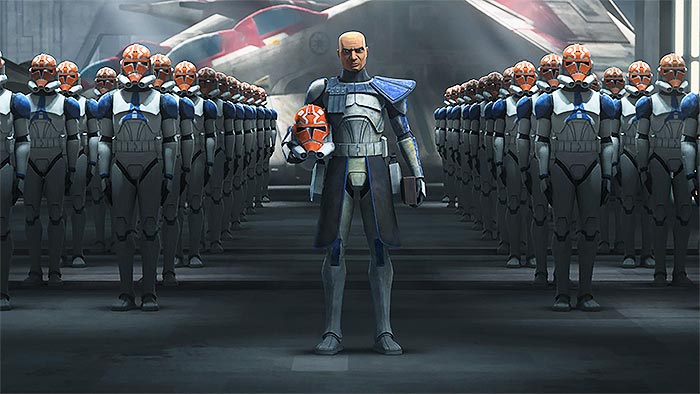
Throughout the seven seasons of The Clone Wars, the helmet of the clones is a key image within the show. Clones are featured in the majority of the show’s episodes, with several episodes focusing primarily on clone troopers like Captain Rex, the clone assigned to work with Anakin Skywalker. Within the Star Wars universe, the clones were created to serve in The Grand Army of the Republic, though the Sith added a second hidden purpose for army. The clones were created from the genetic information of notorious bounty hunter Jango Fett. Because of this, the clones all share the same face, as well as the same voice, that of actor Dee Bradley Baker. On the outer rim planet of Kamino, the young clones were trained within batch of squads, and often mentored by older clones. In this environment, the clones found their role and purpose within the large structure of their army.
For the majority of the show’s episodes prior to season seven (2020), the helmet can be seen as a symbol of unity and comradery among the clones. The shared designed of the helmet and armor help identify the characters as a part of the same army/organization. The helmet reinforces the shared goals of the army and the concept of working together for a greater purpose. For example, in the season 3 episode “ARC Trooper”, clone trooper known as “Fives” makes a speech to inspire the clones to protect the planet of Kamino. Fives rallies his brothers in arms by asserting that the clones are the “same heart, same blood”. Throughout the series, the concept of unity and brotherhood is an important idea to the clones. The clones learn to trust one another in battle and grow close to their squad mates. This deep bond between clones, often symbolized by the helmets they wear, contribute to a shared sense of duty and sacrifice that was a huge part of the television series.
The comradery of the clones is on display in the first episode of the four part finale called “Old Friends Not Forgotten” (Season 7, Episode 9). In the episode, the clone helmet is used to represent the respect the clone troopers have for Ahsoka Tano, Anakin Skywalker’s former appretice. Though Ahsoka has left the Jedi order, she has fought alongside the clones throughout war and is deeply bonded to them. In the episode, Ahsoka returns to lead the clones on one final mission against Darth Maul on the world of Mandalore. In response to her return, Captain Rex (who is a fierce ally of Anakin and a mentor to Ahsoka), has the clones paint their helmets to match her distinct orange and white facial marking. Each clone under Ahsoka command is distinctly marked as part of her task force.
This gesture of tremendous respect is punctuated with Anakin’s assertion that loyalty means “everything to the clones”. Rex and the other clones honor Ahsoka, who has fought besides them every step of the way. Rex’s gesture helps illustrate that the clones treat her like an honorary member of their fraternity. This moment demonstrates that before Order 66, the clones extended their loyalty to many of the Jedi, who they fought alongside with. This helps to show why many Jedi never suspected an attack like Order 66: their clones had showed the Jedi unwavering loyalty and commitment. While the moment between Ahsoka and her clones is moving and emotional in “Old Friends Not Forgotten”, it takes on a darker edge in the final two episodes where Ahsoka is force to fight against clones that are “wearing her mark” (Asher-Perrin).
The Humanity And Distinct Personalities Of the Clones Was A Key Part Of The Series
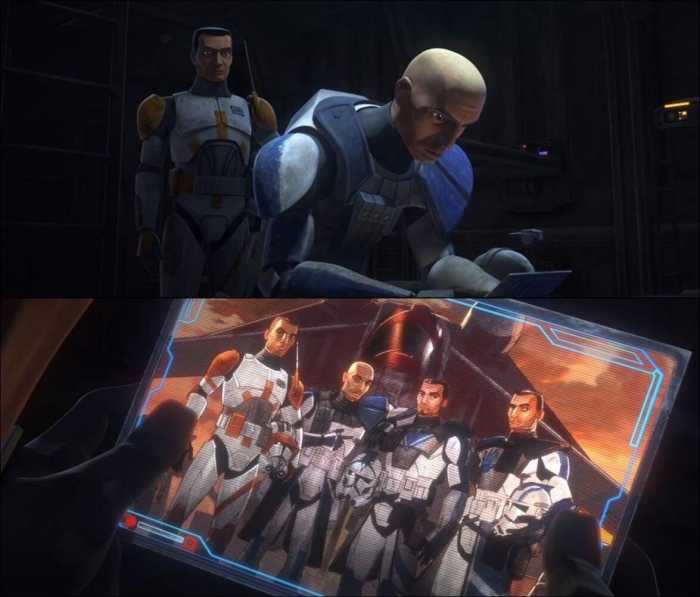
Since the first episode of The Clone Wars, the clones were shown to be more than just identical, disposable soldiers. In a review for The Final Season of The Clone Wars for SYFY Wire, Caitlin Busch asserted that a crucial aspect of the animated series’s storytelling has always been about showing that “the clones are individuals”. The show made individual clones troopers, like Captain Rex and Commander Cody, important parts of the series and many of the clones became beloved characters in their own right.
One of the issues with the prequel trilogy was the the three year time jump between Attack of the Clones (Episode II) and Revenge of the Sith (Episode III). In short, the films jump from the beginning of the clone wars to the final months, leaving the bulk of the war unexplored. This decision left the audience with no discernible evidence about why the Jedi trusted the clones. Similarly, the audience did not have any attachment to the clones who appeared in Episodes II or III. The Clone Wars animated series fixed these problems by giving context to the audience and documenting the events of the war. The show was especially effective at examining the experience the clones had during the war, which included a great deal of loss.
One of The Clone Wars longstanding goals as a series was to show the experience of the clones and to humanize the individual clone troopers. The series did an excellent job of conveying the individual personality of clones by giving them distinct helmet art and hair style, along with varying temperaments and character traits. In an article for Tor.com, Emmet Asher-Perrin points out that instead of a faceless army, the audience has “clone troopers that we’ve spent seasons alongside”. Characters like Captain Rex, Fives, Echo, Heavy, and Commander Kody became as important and beloved as many of the Jedi in the series, despite these characters having the same face and having the same voice actor. These characters were remarkably distinct despite the fact they had the same facial features and voice actor. Fans of the series could easily tell one clone from another, which was a remarkable achievement that the cast and crew should be lauded for.
Finally, the team developing The Clone Wars worked hard throughout the series to show that the clones were not a monolithic, faceless army, but rather a group of deeply connected but distinct brothers. In the show, the audience saw clones with different roles and even those who viewed their identity different from the other clones in their unit. Throughout the early seasons of The Clone Wars, the audience was presented with clones who committed treason, clones who were deserters, and clones that were genetically flawed. The inclusion of a diverse group of clone characters demonstrated that while the troopers were initially thought of as the same, their individual experiences within the war helped shaped the characters in distinct ways.
The Helmet Conceals The Clones Humanity During Order 66
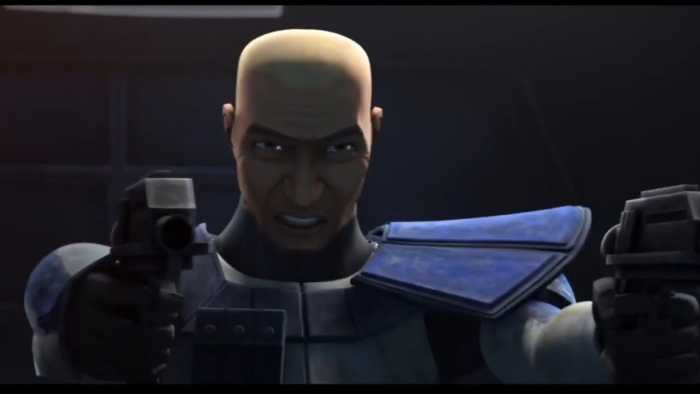
The helmet plays a key role in the intimate drama between Ahsoka and the clones during the chaos of Order 66. Order 66 is the name given to the event where Supreme Chancellor Palpatine (secretly the Sith Lord Darth Sidious) activates a secret order that hijacks the clone troopers’s free will and compels them to attack all Jedi across the galaxy. Due to a micro chip that was place inside their head, known as the inhibitor chip, the clones are powerless to stop the massacre. In the penultimate episode “Shattered” (Season 7, Episode 11), the audience sees the experiences of Rex and Ahsoka have during Order 66. The episode opens with Rex and Ahsoka taking Maul back to Coruscant to face justice for his numerous crimes. As their Star Destroyer is heading through light speed, the clones receive Order 66 and the massacre of the Jedi is initiated.
During the events of Order 66, the helmet is a key symbol for the clones and their powerlessness to defy Order 66. As Rex receives Darth Sidious’s command, the audience can see Rex struggling against his inhibitor chip. The camera is framed on Rex’s helmet during the scene, and the audience can see Rex’s helmet shaking violently in his hands. Rex is clearly struggling with the role given to him and the other clones. The tension builds in the scene until we see Rex’s helmet tumbling to the ground. As Rex aims his blasters at Ahsoka, Rex’s face is contorted in agony as he struggles against the inhibitor chip and its programming. Discussing that moment, Dave Filoni assert that Rex has is able to resist Order 66 for moments because he has some “consciousness that this has all gone down the wrong way, but he can’t prevent it from happening”. As Ahsoka escapes the bridge and Rex dons his fallen helmet, the clones’ humanity is effectively hidden from both Ahsoka and the audience.
As Rex chases Ahsoka in the aftermath of her escape from the bridge, he wears his helmet for the rest of the sequence, a clear sign of the lose of identity that all the clones suffered during Order 66. In an interview with Nerdist, Dave Filoni discussed the desire to show how the clones were being stripped of their free will. Filoni asserts that the team tried “every method possible, visually, musically, color-wise to show that they became somebody else” (Ratcliffe). It is notable that for much of “Shattered”, including the sequence where Clones are chasing Ahsoka, that all of clones troopers are wearing their helmets. In this situation, the helmet work to conceals the humanity and individuality of the clones. “Shattered” shows that inhibitor chips transformed the diverse clone population into slaves with a single, terrible purpose.
It is only in the final minutes of the episode, where Ahsoka captures Rex in the medical bay and is in the process of surgically removing Rex’s inhibitor chip, that Rex’s helmet is removed. The removal of his helmet and inhibitor chip allow Rex to act as an individual, free from the control of Order 66. In his first moments of true freedom, Rex chooses to save Ahsoka by firing on his clone brethren. Rex chooses to protect Ahsoka against the other clones, who are still controlled by their inhibitor chips. The penultimate episode ends with Rex and Ahsoka pinned down in the med bay, preparing to confront the clones, who now appeared as a faceless, merciless army.
Ahsoka’s Heartfelt Acknowledgement of The Clones’ Humanity
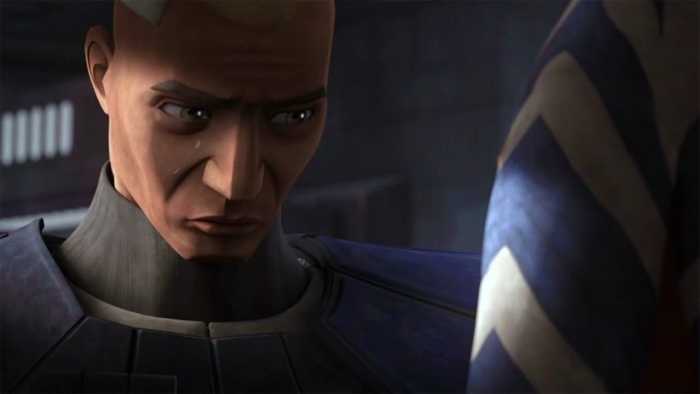
The final episode “Victory and Death” (Season 7, Episode 12) has a slew of emotional moments, but one of the most significant moments involves Rex and his helmet. As Ahsoka and Rex search for a way to escape from the failing Star Destroyer, the pair find themselves blocked by a full garrison of clones. Since the ships in the hanger are the only means of escape, the clone troopers know that Rex and Ahsoka will need to confront them in order to escape. In an exchange with Rex, Ahsoka clearly states her desire not to kill any more clones. Rex (wearing his helmet) lashes out at her, reminding her that his “brothers are willing to die and take you and me along with them”. Rex, speaking from experience, is aware that brainwashing surrounding Order 66 compels the clones to disregard their own safety and survival if it means killing Ahsoka.
In response to Rex’s fiery speech, Ahsoka reaches out and gently removes Rex’s helmet. With downcast eyes and tears dripping down Rex’s cheek, the full depth of Rex’s pain and confusion becomes clear to the audience. Rex has entered an impossible situation; he has been forced to fight against his brothers, with no hope of negotiating or reasoning with them. While many in the galaxy (and the audience) may view the clones as faceless and disposable soldiers, this sequence helps demonstrate that underneath their armor, the clones are “people, not photocopied cogs in a massive machine” (Asher-Perrin). Rex’s pain is as real as any pain that is experienced by Ahsoka, Anakin, or Obi-Wan.
With the removal of Rex’s helmet, Ahsoka acknowledges the pain, the grief, and conflict that Rex feels. Ahsoka’s statement to Rex underscores the supressed and undervalued humanity of not just Rex, but the entire clone army. Ahsoka reminds Rex that he is a “good soldier” and so is “every one of those men down there”. This moment demonstrates that Ahsoka is still able to recognize the shreds of humanity that exist within the clones, regardless of how they have been manipulated by Supreme Chancellor Palpatine/Darth Sidious. Ahsoka’s choice to minimize casualties is one that reduces her odds of a successful escape, but choice serves to demonstrate how deeply Ahsoka cares about the troopers who once fought alongside her.
Finally, Ahsoka’s tenderness and empathy for the clones is contrasted by the viscious actions of Darth Maul, who Ahsoka releases in an attempt to improve her odds of escaping. Maul murders dozens of clones without hesitation and critically damages the ship’s hyperdrive. This destructive action sends the large vehicle into a deathly spiral that will end with a crash on a nearby moon, an event that is destined to everyone clone on board. While Ahsoka wishes to spare as many troopers as possible, Maul’s destructive violence shows that he does not care about a single clone life on the Star Destroyer. For Maul, the clones are faceless obstacles standing between him and his escape, echoing the actions of his former master Darth Sidious, who stripped the clones of their free will during Order 66.
A Final Heartbreaking Reminder
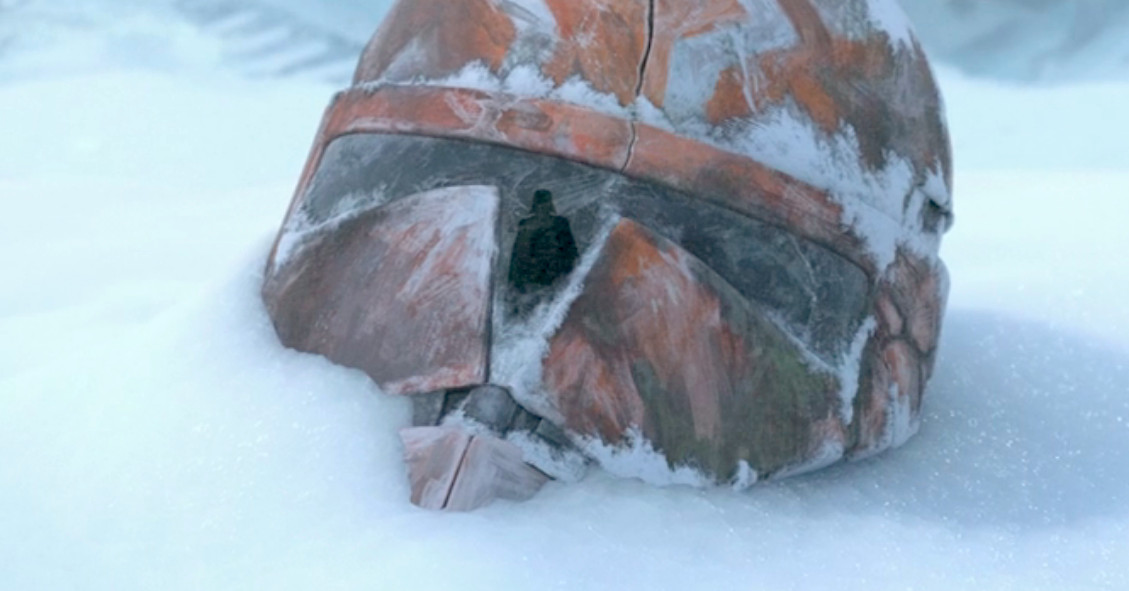
The final scenes of The Clone Wars have incredible impact on the audience. Augmented by a haunting score by Kevin Kiner, the sequences have some of the heartbreaking imagery in the series.
While Ahsoka and Rex escape from the damaged Star Destroyer before it crashes into a moon, all the clones on board are killed. Ahsoka and Rex, the later of which is no longer wearing his helmet, bury what remains of the fallen soldiers. The result is a mass grave with the only visible remnant of the clones being their helmets, which are staked on sticks above the graves. This image of the helmets on the graves is another crucial acknowledgement of the clones as individual. Ahsoka and Rex take time to bury the fallen clones with “all the dignity they are owed” (Asher-Perrin). This sentiment is one echoed by Dave Filoni himself, who asserts that Rex and Ahsoka honor the fallen who are “friends, even though they tried to kill them” (Ratcliffe). It is a final tribute to the clones, who were brothers to Rex and comrades to Ahsoka.
The final scene of the series is a flash forward, with Darth Vader visiting the remains of the Star Destroyer. Very little of the mass grave is visible through the snow. The series concludes by lingering on the image of a single clone helmet bearing Ahsoka facial markings, half buried in the snow. This scene has huge symbolic importance to the series. In an interview with Entertainment Tonight, Filoni points out that “the clones, for all their character and all their individuality” are gone in the final scene replaced by the storm troopers who are “completely devoid of it [personality]”. In the previous episode “Shattered” Rex’s quote discussed how the clones’ existence is tied to the war, reminding Ahsoka that “many people wish it [The War] had never happened, but without it, we wouldn’t exist”. The grim final moments of the series shows that with the war over, the usefulness of the clones has also evaporated.
The helmet is a heartbreaking image to conclude the show. It demonstrates the “the true cost of what Palpatine did”, not just to the Jedi, but also to the clones (Ratcliffe). While the long, arduous war involved many demonstrations of the diversity and agency of the clones, the final moments of the war reveal how “disposable” the troopers were to Darth Sidious and the galaxy as a whole. Very few beings will remember the individual clones and their distinct personalities. Names like Jesse, Fives, Kody, and Rex will be lost to time. The bravery, and brotherhood that the clones demonstrated will be lost to time. The clones, who had different hopes, dreams, fears, and personality quirks throughout the series will be forgotten. A major group of heroes from the war have become faceless, left without any lingering identities. Nothing else remains besides their weathered helmets.
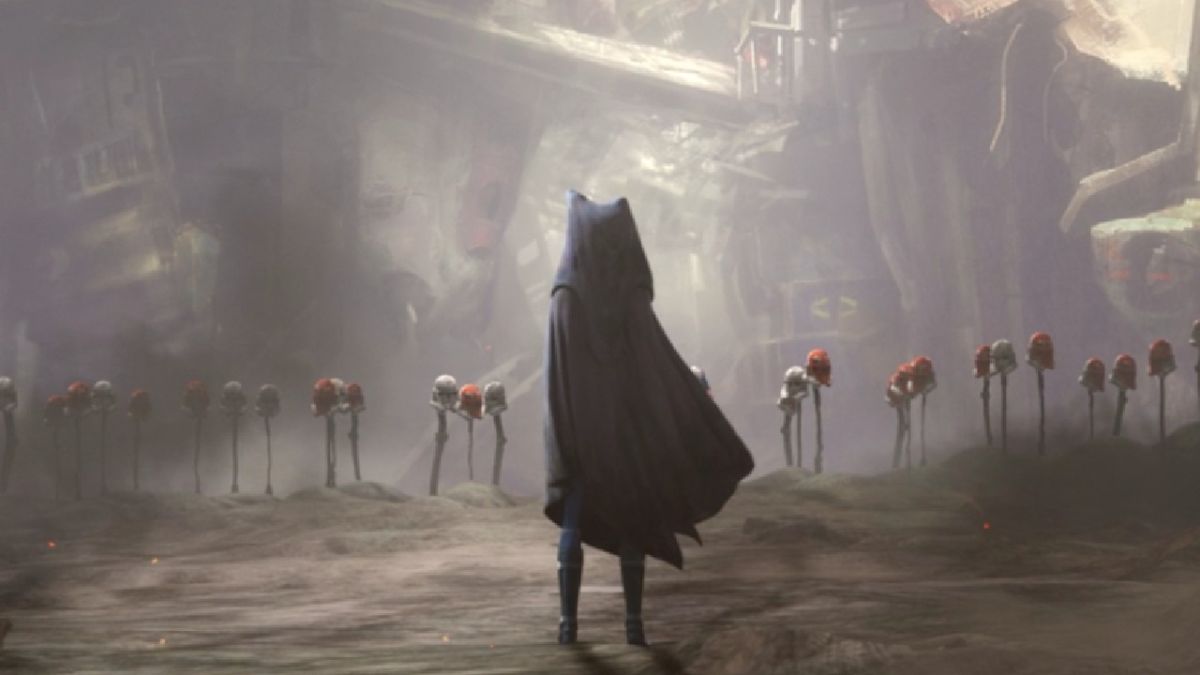
When The Clone Wars was cancelled in 2014, there was an outcry of support for the beloved series. For years, fans were frustrated that one of the most important stories in Star Wars history was left unfinished. When the show was brought back in 2020 for a twelve episode conclusion on Disney+, the Lucasfilm team was finally able to bring the story to its emotional and tragic conclusion.
By focusing on the events of Order 66 through the eyes of Rex and Ahsoka, the team behind the finale made one of the most horrific events in Star Wars history incredibly intimate. The pain and grief that Rex and Ahsoka experience as they fight against their former comrades make the event even more heartbreaking than its previous portrayal in Revenge of the Sith. As the series concluded, the symbol of the clone helmet was used to remind fans that before their horrible end, the clones were more than disposable soldiers to the audience, as well as to characters like Ahsoka. With distinct personalities, beliefs, and fears, the clone characters demonstrates their free will and a range of emotions in unexpected ways.
The helmet become the key symbol in the final arc of The Clones Wars. On one side, the helmet became of symbol of the faceless terror that the Clones became during Order 66, a group lacking individual identity or humanity. In contrast, the removal of the helmet was used to illustrate Rex’s humanity as well of that of all his brethren. As the series concludes among ashes and graves, all that remained of the clones was a single symbol: the helmet they wore. It was a symbol which defined them as a collective group, but one that often masked the individuality that the audience saw in them over the course of seven wonderful, evocative, and emotional seasons.
Work Cited
Asher-Perrin, Emmet. “The Finale of Star Wars: The Clone Wars Puts the Prequels Into Perspective.” Tor.com, 4 May 2020, www.tor.com/2020/05/04/the-finale-of-star-wars-the-clone-wars-puts-the-prequels-into-perspective/.
Busch, Caitlin. “In The Clone Wars Season 7 Premiere, It’s the Clones’ Galaxy and the Jedi Are Just Living in It.” SYFY WIRE, SYFY WIRE, 27 Mar. 2020, www.syfy.com/syfywire/star-wars-the-clone-wars-season-7-premiere-bad-batch-rex.
Crossan Ash. “’Clone Wars’ Finale Postmortem: Dave Filoni Breaks It All Down.” Entertainment Tonight, Entertainment Tonight, 4 May 2020, www.etonline.com/the-clone-wars-finale-postmortem-dave-filoni-breaks-down-that-star-wars-reveal-exclusive-145892.
Ratcliffe, Amy. “Dave Filoni on the End of STAR WARS: THE CLONE WARS.” Nerdist, 10 June 2020, nerdist.com/article/star-wars-clone-wars-final-season-dave-filoni-interview/.
“ARC Trooper.” The Clone Wars, season 3, episode 12, Cartoon Network,
17, Sep. 2010. Disney+.
“Old Friends Not Forgotten”. The Clone Wars, season 7, episode 9, Disney+, 17, Apr. 2020.
“Shattered”. The Clone Wars, season 7, episode 11, Disney+, 1, May 2020.
“Victory and Death”. The Clone Wars, season 7, episode 12, Disney+, 4, May 2020.
What do you think? Leave a comment.
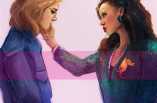
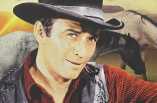
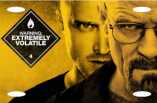

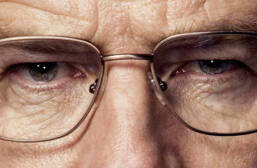


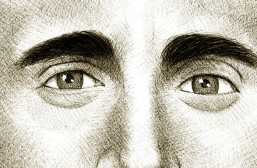

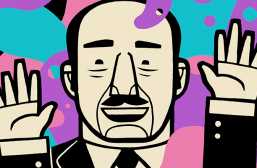
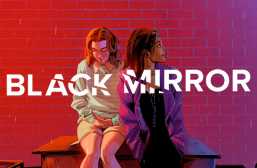
I didn’t watch the Clone Wars series, but I saw some episodes of Star Wars Rebels, including ones where (spoiler) Rex and at least one other clone appear. The new Star Wars films do a good job showing how the stormtroopers are more than just nameless soldiers doing the First Order’s bidding, but after reading this article I am also impressed with how the Clone Wars’ final episodes portrayed the clones as human and weapons. It’s a complex issue and one that it seems the series handled well. (Also, using the helmet as a symbol was a good idea. Easily recognizable but much more important than we might think of it.)
Sometimes a helmet is just a helmet..and sometimes it is a vital symbol. I love articles that explore stuff like this.
I can’t say I’m a fan of Star Wars, just a personal preference. But I think it’s cool that this kind of symbolism can be found within it. I learned a lot from this article! 🙂
This series ending is so sad, I know that it was expected to head in this direction but the show connected us to the characters more than we could have imagined that the prequels didn’t. I loved this series from the very beginning and loved to see the journeys Ahsoka, Kenobi, Skywalker and even Windu and Yoda as well as many of the other Jedi. I do wish there could’ve been more episodes in this season finale but I still loved it! It just hurts to see our beloved characters go in this amazing series.
I always thought it was funny that the whole prophesy about Anakin was that he would “Bring balance to the force”. Well, he did, didn’t he? Not even joking here, seems that if the force was imbalanced at the start of the Clone Wars it was in favor of the light side. By the time Anakin was done there were two exceedingly powerful Sith and a handful of average to powerful Jedi. Seems things were pretty balanced at that point.
I’m not gonna lie this show ending shows me that I’m not a kid anymore I remember waking up early every Monday Wednesday and Friday in 2009 through 2013 just too watch reruns of the clone wars before school and now that the series ended like this I couldn’t help but cry Bc it reminds me of all the times I had going to friends houses and talking about it and watching it and it being one of the only things me and my brother actually got along with I love the way it ended it shows that it was made for the same audience but they knew we are older so it gave us the real order 66 that happened and it’s heartbreaking and sad but also gives hope which is something most shows and movies don’t do too much anymore emotion I loved it and I hope everyone else did too.
I can’t stop thinking about the Jedi Younglings we saw in the episode with Ahsoka and Yoda taking them to Ilum to get their Kyber Crystals were probably slaughtered by Anakin at the Temple 🙁
After seeing all of the helmets lined up and ahsoka putting her saber in the snow, I cried like a big baby.
The Clone Wars is an absolute triumph. And given how it started, that’s saying a lot. Rewatching on Disney+, the pilot movie is utterly dreadful, and the first season really is not worth revisiting. It’s not until half way through season 2 that the show finally starts to get its sh# together, allows itself to be a bit more dramatic, and the main threads that hold it together for the rest of its run start to weave.
Perhaps the best example of this is Ashoka herself. At the start she is that classic Saturday morning cartoon stereotype: the cutesy, kiddy sidekick. I think a lot of people forget how almost everyone hated her, and called her the new Jar Jar Binks, and that Star Wars was ruined. But she grew to become one of the Saga’s most popular – and it has to be said, most well developed – characters.
The finale, for me, was the Revenge of the Sith I wish I’d seen in the theatres. The turn of the Clone Troopers is as much a tragedy as the turn of Anakin, and frankly played better with the animated Rex than the wooden performance of Hayden Christensen. (Although I will always place the blame for the terrible acting in the prequels squarely where it belongs: at Lucas’s sub-par direction. Even Liam Neeson became a God awful actor under his non-direction, and its a wonder Natalie Portman’s career survived.)
But the finale also gave Star Wars a chance to try something fresh: that haunting Vangelis-like synth music at the climax was not only not out of place with the saga’s iconic orchestral heritage, but it gave the closing shot of Vader’s reflection in the cold, dead stare of the clone trooper’s helmet a truly chilling edge, and an admirably mature last page for a series that began as a “just a cartoon for kids.”
That comment about the music at the end is spot on, which is a shame, as the John Williams score is masterfully done in the films, Just a shame the films don’t really match it
The score at the end of the series really drives it home.
Jesse’s helmet is the only one we cared about. Who agrees?
Incorrect.
I’ve not seen the newest episodes but remember watching the original Clone Wars on Cartoon Network- it was a great watch and series…
The Clone Wars was one of the best animated series’ ever made. The ending broke me. Seeing Rex man tear absolutely wrecked me. The fact that just prior to order 66 the 501st detachment paint their faces to match her markings is so heartbreaking because you know what’s coming. All that respect, all that love is about to be forcibly removed.
I like how the 332nd clones showed a level of restraint when seeing Ahsoka and only fired when ordered to by Jesse, when other battalions across the galaxy would have just started blasting as soon as they saw jedi. You can also see Jesse show a slight hesitation when he considered Rex’s claim, to the point of lowering his guns for a brief moment, before the chip took control again.
I loved this whole arc, but I do think Ahsoka has avoided a lot of blame for letting Maul out. Obviously he was going to survive, but I think its important to realize that her doing that led directly to everyone else on the ship dying. We also never really see Maul help them. He caused chaos which I’m sure indirectly helped them but overall, she basically just outsourced killing which I think really diluted her stance on trying to protect the clones. I did still loved it.
One of the best examples of storytelling i’ve ever seen. phenomenal final episode. it makes you reflect not only on the clone wars series itself, but also the star wars universe as a whole.
Love that the ending to the clone wars show was such a touching moment about the master and the padawan. The prequel era really gave us so much content and in that some of the most amazing characters. Ahsoka is everything I don’t think I even need to explain why we all love her so much she’s just such a pure hearted person. I love that Maul was given so much in this show because we really get to see just how powerful he really is. He realized in the end that he was being played in something bigger than he is and saw the bigger picture so he decided to do his own thing and liked how the show made that clear. Obi wan’s sarcastic remarks gave me life and how classy he is. He’s everything a Jedi should be. Anakin always brave and bold willing to do what nobody else would. The council. I’m going to always remember all of it and rewatch the series from time to time no doubt. Wow what a ride it has been.
Give me a stand alone Darth Vader film, taking place right after Order 66, it would be epic.
The last four episodes prove that Disney is capable of creating good Star Wars content despite the new trilogy. They really did a fantastic job with it.
I think that between Clones Wars and Rebels, the animated shows for Star Wars during the Disney Era have been great.
I teared up at the end of the finale.
A good essay.
I loved the way they wrapped up such a nostalgic series with a piece of the Rebels series’ mysteries being solved with showing Ahsoka’s and Rex’s Survival after order 66, as they appeared in Rebels. Season 7 was About Rex and Ahsoka.
I just watched this after reading. Thank you. The last 4 episodes are the greatest things I’ve ever seen in animation.
I think Vader deep inside believed Ahsoka died because he seems surprised in Rebels after sensing her force signature. And I’ll be honest, I like how the series ended, but it would have been nice to see Ahsoka go back to the sister team she meet, but if she had, she would have been hunted down. We also know how Maul ended up where he was in Rebels.
I live in a place where most people have no idea how big the Star wars fandom is. and have no idea the clone wars series ever existed, and yes I’m one of those people, I have no idea why I started watching it, all I can remember is that I was thinking “why the hell americans so obsessed with Star Wars” then I began researching it what’s a jedi, a sith, The Republic, The Separatist, The Rebels, The Empire, The Resistance, The First Order then I learned about the clone wars then I thought I should give Star Wars a try, I watch it chronologically but not really cuz I started watching Star wars In November 2019 and I finished watching all of it in mid January before clone wars season 7 even releases. And I didnt regret I thought it was dumb watching a scifi movie that came out in a time that my dad hasn’t started to puberty yet but then I enjoy it more than prequels and sequels and after watching all of it, I am disappointed a years of building a great story a decades, just why? The star wars have great story In the Republic era, In the Rebels era, and both of those era ends up in this sequels mess a story that takes decades to tell just got destroyed by a feminist the clone wars season 7 did great but it cant fix the sequel all I can think of is to make it into noncannon.
Final season didn’t disappoint, but I gotta say some things that could’ve made this better:
Should’ve given more screen time for Maul, such as how he escaped Sideous and how he discovered order 66 (I know it’s in a comic but if that had been animated it would’ve been awesome).
Maybe have the season split between the stories of Maul and Ahsoka, then it slowly leads to their final duel. The sisters arc felt prolonged for my liking and so even a single extra episode of Maul’s introduction could’ve been great.
Other than that the siege of Mandalor was perfect and order 66 was heartbreaking and breathtaking. Disney should be looking towards Faloni for script writing
The final arc is better than the entire sequel trilogy.
After reading this article, I rewatched the final episode again and it’s still such an emotional gut punch. That final shot of Vader walking away from the clone trooper helmet is gonna be my favorite shot from Star Wars for a good long while. Such a tragic end to a fantastic show.
I really liked it. It makes me wanna rewatch the whole series.
This excellent finale makes the sequels that much more disappointing.
Ahsoka and maul’s fight was the best in the whole series I’d say.
Its a bit relieving and refreshing to receive a good series ending in all that trend of other good series having bad last seasons/endings.
Clone Wars was friggen amazing. Disney needs to give Filoni the Feige spot in the Star Wars universe and let him go to town.
Seeing Anakin for the last time smile at Ahsoka as she takes her lightsabers back and then seeing Vader in pain as he picks up her lightsaber tears me apart Star Wars has never had a happy ending. I’ve always assumed it as The Tragedy of Star Wars.
I felt satisfied at the end. And, I felt relieved that Filoni was allowed to finish what he started so long ago. In my view, a large amount of time has passed before Vader finds the crashed ship. The whole thing is frozen over and her discarded saber is worn. Was hoping that we’d get to see how Gregoire and Wolf linked up with Rex … but that’s not a super important detail. Left to the imagination, we can assume that Rex + Ahsoka split up and Rex must find the two later on and convince them to remove their chips. Lastly, I was expecting that Ahsoka and Anakin were going to have some final encounter before he became black suit Vader but that never happened. In a way, perhaps it’s more fitting that her last encounter with Anakin was almost identical to Obi-wan’s. Splitting Anakin off from his closest friends had to be key to Sidious’ turning of him. Can you imagine substituting Obi-wan or Ahsoka for Windu in RotS Sidious fight and Anakin still turning? I can’t.
I just hope we get to see Ahsoka’s full story. We need more from her. I want to see how she ultimately ends her story. As we still don’t actually know where she is hopefully we will get a new series of her looking for Ezra.
Clone Wars is my favorite part of the whole Star Wars universe. It’s actually what hooked me in the first place. (And I wish more film-only fans can watch it too.) The writing in this show has always been well thought out and incredible, and as you said, they succeed in humanizing the clones who were a vital part in the war and Order 66.
Your breakdown of the helmet symbolism is amazing! The clones are as much protagonists as Anakin, Ahsoka, and Obi-wan. Their helmets are the reminder, though now painful, of that.
The music at the end hit me differently I wasn’t ready for that.
I loved the ending to this series it really brought back memories back when I first watched Revenge of The Sith when I was 4 years old, now I’m 18 and it was really fascinating to piece this story all together and really reminds me what a tragic event order 66 was.
It almost feels like Disney was apologizing. Like, “Alright fans, even though we’ll never admit it, we know we shat the bed with the sequel trilogy, so as a reward for sitting through that crap, here’s one last season of that show you all loved that we cancelled years ago. Enjoy!”.
I’m gonna miss this show. This was apart of my childhood, and it always will be.
RIP Star Wars the clone wars: (2008-2014)(2020).
Definitely one of the best written story lines ever! This is how you write a Star Wars story and have a strong female protagonist without all the Identity Politics bullshit that has ruined so much of Star Wars. Truly demonstrates why Ahsoka has become a fan favorite.
This season made Star Wars so much sadder than you realise at first glance. Everyone was manipulated by Sidious. I wish there was a canonical alternate universe where he was stopped. Ezra should get back in the world between worlds and smother him in the crib.
The only thing i can say i really am disapointed about is that now, i will never know the fate of commander cody.
The final episode of the Clone wars series is breathtakingly beautiful, it enlightens the order 66 events the way they should have been in the live action movies, instead of the ridiculous childish treatment they have been given. Ahsoka is so touching and so badass in this episode, and yet so vulnerable, emotionally devastated by the blow the Siths gave to the Jedi, I cried seeing her despair, and the supporting music is no stranger to this feeling, as it is way above Williams’s partition for Episode III! As a conclusion: this epic episode is the most powerful, emotionally charged, and impacting of the series!
The masking of humanity is always a fascinating exploration. This article highlighted 1984 vibes that I’d never really associated with Star Wars before: the struggle of the individual against malevolent structures of self-serving power. It’s always individual that loses out, but it is the persistence of the individual and the unperturbed -even increasing- humanism that accompanies it that makes these stories so very compelling.
The Clones were often seen as just numbered soldiers. I was fascinated by how this series gave these characters a true spotlight, showing that each man is unique in his own way. Captain Rex was a trailblazer for the the rest of the Clones. He was respected in his work Ahsoka, Anakin, and Obi-Wan. Ahsoka treated him like family and refused to kill him in Order 66. Instead, they saved each other. To see the helmets come off of the Clones, is to see the truth. These men are different people with different opinions. They are not just a group of soldiers, they are human. The ending of The Clone Wars was so powerful. Dave Filoni gave the Clones incredible depth. Now, we are lucky enough to see more of the Clones in the upcoming series, Star Wars: The Bad Batch.
The paradox here is that the helmet at once conceals and symbolizes a soldier’s humanity.
Although no longer canon, I love how the 501st journal from SWBF2 (2005) discusses the helmets as a way of hiding the clones emotions when executing order 66. Truly heartbreaking and a great analysis.
The campaign in Battlefront II is one of my favorite things from Star Wars Video Games. I had so much fun fighting through the various battles and hearing the clones reflected on their experiences. Thanks for bringing that up!
When finn took his helment off..